![]()
Jesus through Sikh eyes
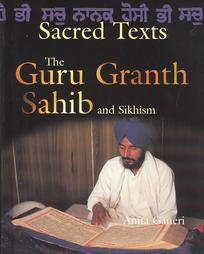
“Coming from the pluralist tradition of Sikhism where the holy book contains not only the verses of the Sikh Gurus but also of Hindu and Muslim saints, and where the Ultimate is received in a variety of perceptions and relationships, I do have problems with the exclusivism of Jesus. The Sikh Gurus reiterate that Allah and Ram are the same, so is the Muslim Mosque and the Hindu Temple. Emerging historically and geographically between the eastern tradition of Hinduism and the western faith of Islam, Sikhism whole-heartedly accepts both eastern and western perceptions of the Divine, and their various modes of worship. But when Christ alone is declared the Omega Point, or Baptism the exclusive way to the Kingdom of God, then where do I stand? As a Sikh I have no place.”
My earliest memories are etched with the physical beauty of Jesus
Christ. His blond hair and blue eyes were so different from all the
people that I knew in India. I attended a convent school where we
recited "Our Father" during the morning assembly, and we took courses
on Moral Science. Most of all I loved going into the Convent where we
sang psalms and collected beautiful images of Christ, and of Our Lady
of Fatima, after whom my school was named.
At home of course it was a different matter. It was a Sikh household
in which the centre of life was the Guru Granth. The holy book is
regarded as the divine revelation and utmost respect is paid to it.
As children we'd help our parents dress the Book in silks and
brocades. It was put on a pedestal while we sat on the floor in
front. We recited its passionate poetry patterned on the raga system
of ancient India. At home we heard bout the life of the Ten Sikh
Gurus who did not look like Jesus Christ.
And yet life was not schizophrenic, for the two worlds with their
different languages, different histories, different images and
different styles of worship co-existed colourfully. Together they
became an essential part of my psyche. The "question" of identity
never came up: just as I knew my name, I knew I was a Sikh. But that
did not stop me from participating excitedly in the religious space
created by my Catholic teachers: it was mysterious and enchanting in
its own way. I can still feel the fervour with which I would
sing "The Lord is my shepherd nothing shall I fear"- in spite of my
desperately poor musical talents! But when I came to finish High
school in America, I saw Christ pervading the fabric of western
society and my own tradition extremely distant. As the only "brown"
student in an all "white" girls' school, I became more conscious
about my identity. I recall reading Walt Whitman's Passage to India,
and beginning my journey home. This American poet, who viewed himself
in the role of Christ, impelled me to explore my Sikh heritage.
Ironically then, the more I grew up in a Christian environment, the
more consciously Sikh I became with the result that Jesus of my
childhood imagination got blurry and lost. Growing up in postcolonial
Punjab, I did not think very deeply about the Sikh Gurus, and now
that I am living in this part of the world, I must admit that I
didn't think very seriously about Christ. So to look at Christ from a
Sikh perspective today is indeed an interesting and challenging
assignment. As I try to do so the figure of Jesus from the
multidimensional world of my childhood resurfaces - giving me much
joy and enrichment.
Who is Jesus Christ? I see him as a wonderful parallel with the
person of Nanak, the first Sikh Guru. There is no direct connection
between Christ and the Sikh Gurus. They do not intersect each other.
The two form separate and distinct temporal and spatial points in our
history, but when we look closely at them, they illuminate each
other. By looking at them as parallel phenomena, we not only learn
more about the founders of Christianity and Sikhism, but we also get
a better sense of ourselves, of our neighbours, and of the world we
live in. Both Christ and Nanak are remembered in almost identical
ways. Churches resound with hymns like "Christ is the light of the
world," and Sikh Gurdwaras with "satgur nanak pragatia miti dhundh
jag chanan hoia — as Nanak appeared, mist and darkness disappeared
into light.” The powerful and substanceless light used across
cultures and across centuries reveals the common patterns of our
human imagination.
Jesus and Nanak ushered a way of life that was illuminating and
liberating. It is interesting that both claimed they had no control
over their speech. Spontaneously, effortlessly, they revealed what
they were endowed with. According to the gospel of John: "I do not
speak of my own accord... what the Father has told me is what I
speak" and Guru Nanak, "haun bol na janda mai kahia sabhu hukmao jio -
I don't know how to speak, I utter what you command me.” In each
case, then, the Divine is the Voice.
Their message too bears a striking resemblance. Against ceremonial
rituals and orthodox formalities, both Jesus and Nanak directed their
followers to the human condition. For them cleanliness did not reside
in external codes and behavior; it was an inner attitude towards life
and living. Just as Christ denounced the superiority of all those who
walked about in long robes, Nanak denounced those who wore loincloths
and smeared themselves with ashes.
Most importantly, both Jesus and Nanak showed us the path of love. In
the Gospels Jesus says, "The greatest commandment of all is this -
love your God with all your soul, mind and strength, and love your
neighbour as yourself.” In the same vein, the Sikh Gurus applauded
love as the supreme virtue, "sunia mania, manu kita bhau.” Bhau or
love is passionate and takes lovers to those depths of richness and
fullness where there is freedom from all kinds of prejudices and
limitations. But we need to put their words in practice. Love for the
Divine would open and expand us towards our families and neighbours;
it would enable us to cast aside racism, sexism, and classism so
prevalent in our contemporary society. We need to remember their
message of love for all our "neighbours"- high and low, black and
white, men and women too. In fact Christ revealed himself first to
Mary. Throughout his ministry, he healed and helped women, and
reminds us of "mother's joy" that a human being has been born into
the world. The Mother is an important figure in Sikh scripture, for
the transcendent One is both father and mother, and Guru Nanak
repeatedly points to the womb in which we are first lodged. Mother's
body and joy, and the earth, our common matrix to which we all
equally belong, are celebrated throughout the sacred scripture of the
Sikhs. But of course, memory is selective and the patriarchs with
their access to the words of Christ and Nanak have remembered,
interpreted, and kept them for themselves. It is important that each
of us begins to see the Christian and Sikh scriptures from our own
eyes and experience their rich legacy.
So, who is Jesus Christ for me, a Sikh? In my mind he is an
enlightener, and though I may not see him as one of the Ten Sikh
Gurus, he is a distinct and vital parallel who continues to play a
very significant role in my life as a Sikh. In a way, I trace my
happiness and at-homeness in contemporary America because he opened
me up to another mode of spirituality at a very young age. He did not
take anything away from my being a Sikh. In fact, Jesus Christ
concretised the message of Guru Nanak: “Countless are the ways of
meditation, and countless are the avenues of love.” (Japji, 17).
Jesus has been a wonderful mirror who in his unique form and
vocabulary promoted my self-understanding. The image of Christ
imbedded in my childhood has made the verses of the Gurus alive for
me. I can see and feel what Guru Nanak meant: “Accept all humans as
your equals, and let them be your only sect" (Japji 28), or Guru
Gobind Singh: "manas ki jat sabhe eke paihcanbo - recognise the
single caste of humanity.” However, it also complicates the
situation. Coming from the pluralist tradition of Sikhism where the
holy book contains not only the verses of the Sikh Gurus but also of
Hindu and Muslim saints, and where the Ultimate is received in a
variety of perceptions and relationships, I do have problems with the
exclusivism of Jesus. The Sikh Gurus reiterate that Allah and Ram are
the same, so is the Muslim Mosque and the Hindu Temple. Emerging
historically and geographically between the eastern tradition of
Hinduism and the western faith of Islam, Sikhism whole-heartedly
accepts both eastern and western perceptions of the Divine, and their
various modes of worship. But when Christ alone is declared the Omega
Point, or Baptism the exclusive way to the Kingdom of God, then where
do I stand? As a Sikh I have no place.
Personally, I find it hard to understand how the God of Genesis
becomes the biological father of Christ in the Gospels. According to
Genesis, God creates the earth, animals, Adam and Eve - but he
remains distant and far away. How can this totally transcendent God
become the Father of Christ? How can he beget Jesus? Now Guru Nanak
is not viewed as an incarnation of the Divine; rather, he is an
enlightener whose inspired poetry becomes the embodiment of the
Transcendent One. I guess the issue of incarnation really troubles me
as a Sikh. Creation in Christianity is modelled on a distant artist,
more in the sense of a commander-in-chief, rather than on the
biological mother who actually bodies forth her offspring. The Virgin
Birth of Christ sends negative messages about our bodies, our world,
and of our selves. Now that I think of it, saying "our Father" in a
language that was not my mother tongue did not make me any less
committed to Sikhism. But it has left an indelible paternal figure in
my imagination, which - in spite of all my Sikh and feminist mental
footnotes - still dominates. I sometimes wonder how my world would
have been shaped had I attended a Hindu school and visited goddess'
Kali's temple which was close to my home! In postcolonial Sikh
society it was safe and secure to go to Convent schools and even
attend Catholic services because it was all very "distant." But the
Hindu tradition so close geographically, historically,
anthropologically, and psychologically, was all too dangerous and
threatening.
I find similar fears and phobias now circulating in our contemporary
western society. As our world is getting to be a smaller and smaller
place we are getting more and more afraid of losing our self, of
losing our "identity." So instead of opening ourselves up and
appreciating others, we are becoming more narrow and insular. Our
tunnel vision makes us grope in darkness. How can we remain afraid
and threatened by each other's religions? It is not a matter of
simple tolerance, and it is not simply mastering facts and figures
about other religious traditions, and it is certainly not about
converting and conversions from one faith to another. As Jesus
resurfaces in my mind, I realise the beauty and power of his
personality for me, and I realise the urgency of breaking our narrow
mental walls. Just as he entered the imagination of us Sikhs in far
away India, Sikhs and others have to enter into the imagination of
people here in the West. We have to see the "light" that Jesus and
Nanak ushered in for us.
So many Indians, Chinese, Japanese, Africans, Middle-easterners have
made their homes here, but how little we know about each other's
spiritual worldviews! We may sit in the same classroom, work in the
same office, and fly in the same planes, but we remain segregated at
a fundamental level. During the first waves of migrations, the racial
policies pretty much forced into homogenising matters, and in recent
waves, sacred spaces and sacred times are confined to ethnic ghettos
and left to their individual communities. The result? We are
impoverished. We have lost out on the extremely rich arabesques of
images, languages, metaphysics, rituals, music, and poetry and many
other wonderful resources of our global society. Sadly, even after
century and a half, we are far from fulfilling Walt Whitman's
exhortation:
Lo, soul, seest thou not God's purpose from the first?
The earth to be spann'd, connected by network
The races, neighbours, to marry and be given in marriage,
The oceans to be cross'd, the distant brought near,
The lands to be welded together.
Walt Whitman, Passage to India!
We may have triumphed in producing physical and technological
networks, but we have failed in creating mental and spiritual links.
We need to "weld together." We need to experience the fullness of
humanity and the transcendence of the Divine. Together, Christians,
Sikhs, Hindus, Muslims, Jews, Buddhists, Jains, men and women, we
should relish the plurality and diversity of our human culture. It is
more than a coincidence that Christians and Sikhs celebrate the birth
of their communities on the first day of spring - called Easter in
northern Europe and Baisakhi in India. Our joint celebration of the
annual renewal of life carries on the legacy of Jesus Christ and Guru
Nanak.
Nikki Singh, Jesus through Sikh eyes
http://www.bbc.co.uk/religion/religions/sikhism/people/jesus.shtml
Apokalypsis: The fulfillment of eschatological instruction by the Paraclete in the Age to Come promised by Jesus at the Last Supper
An apocalypse (Greek: apokalypsis meaning “an uncovering”) is in religious contexts knowledge or revelation, a disclosure of something hidden, “a vision of heavenly secrets that can make sense of earthly realities.” (Ehrman 2014, 59)
“An apocalypse (Ancient Greek: apokalypsis ... literally meaning "an uncovering") is a disclosure or revelation of great knowledge. In religious and occult concepts, an apocalypse usually discloses something very important that was hidden or provides what Bart Ehrman has termed, "A vision of heavenly secrets that can make sense of earthly realities". Historically, the term has a heavy religious connotation as commonly seen in the prophetic revelations of eschatology obtained through dreams or spiritual visions.” Wikipedia 2021-01-09

Total number of recorded talks 3058: Public Programs 1178, Pujas 651, and other (private conversations) 1249
“The Paraclete will come (15:26; 16:7, 8, 13) as Jesus has come into the world (5:43; 16:28; 18:37)... The Paraclete will take the things of Christ (the things that are mine, ek tou emou) and declare them (16:14-15). Bishop Fison describes the humility of the Spirit, 'The true Holy Spirit of God does not advertise Herself: She effaces Herself and advertises Jesus.' ...
It is by the outgoing activity of the Spirit that the divine life communicates itself in and to the creation. The Spirit is God-in-relations. The Paraclete is the divine self-expression which will be and abide with you, and be in you (14:16-17). The Spirit's work is described in terms of utterance: teach you, didasko (14:26), remind you, hypomimnesko (14:26), testify, martyro (15:26), prove wrong, elencho (16:8), guide into truth, hodego (16:13), speak, laleo (16:13, twice), declare, anangello (16:13, 14, 15). The johannine terms describe verbal actions which intend a response in others who will receive (lambano), see (theoreo), or know (ginosko) the Spirit. Such speech-terms link the Spirit with the divine Word. The Spirit's initiatives imply God's personal engagement with humanity. The Spirit comes to be with others; the teaching Spirit implies a community of learners; forgetful persons need a prompter to remind them; one testifies expecting heed to be paid; one speaks and declares in order to be heard. The articulate Spirit is the correlative of the listening, Spirit-informed community.
The final Paraclete passage closes with a threefold repetition of the verb she will declare (anangello), 16:13-15. The Spirit will declare the things that are to come (v.13), and she will declare what is Christ's (vv. 14, 15). The things of Christ are a message that must be heralded...
The intention of the Spirit of truth is the restoration of an alienated, deceived humanity... The teaching role of the Paraclete tends to be remembered as a major emphasis of the Farewell Discourses, yet only 14:26 says She will teach you all things. (Teaching is, however, implied when 16:13-15 says that the Spirit will guide you into all truth, and will speak and declare.) Franz Mussner remarks that the word used in 14:26, didaskein, "means literally 'teach, instruct,' but in John it nearly always means to reveal.” (Stevick 2011, 292-7)
The Holy Spirit as feminine: Early Christian testimonies and their interpretation,
Johannes van Oort, Radboud University, Nijmegen, The Netherlands
Department of Church History and Church Polity, Faculty of Theology, University of Pretoria, South Africa
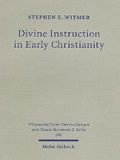
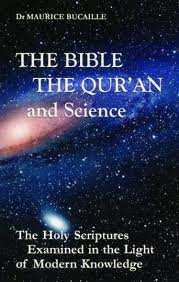
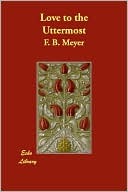
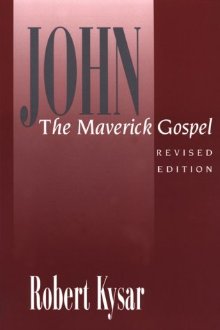
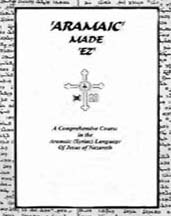

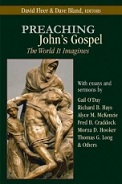

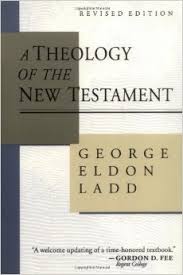
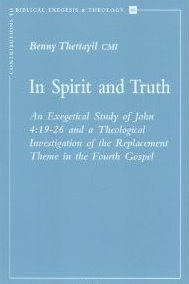


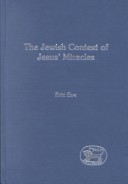
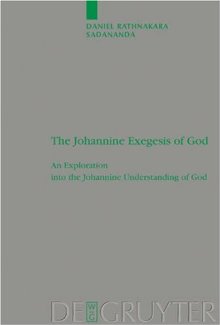

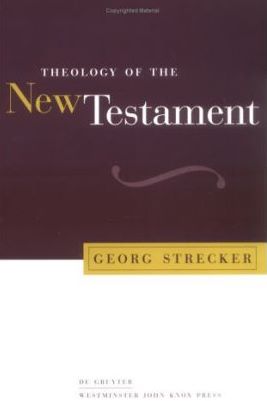
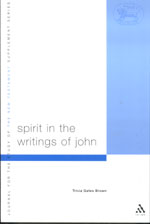
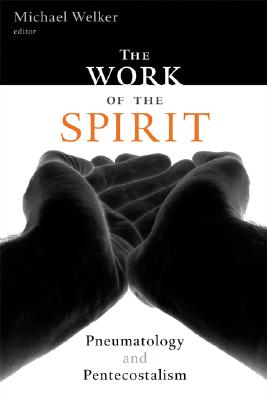
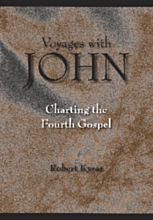


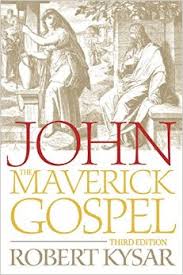
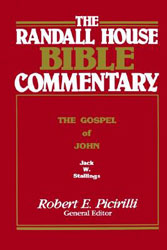
 “The teaching of the Paraclete, as the continuation of Jesus' teaching, must also be understood as the fulfillment of the promise of eschatological divine instruction.”
“The teaching of the Paraclete, as the continuation of Jesus' teaching, must also be understood as the fulfillment of the promise of eschatological divine instruction.”Stephen E. Witmer, Divine instruction in Early Christianity
“Jesus therefore predicts that God will later send a human being to Earth to take up the role defined by John .i.e. to be a prophet who hears God's words and repeats his message to man.”
M. Bucaille, The Bible, the Qur'n, and Science
“And when Jesus foreannounced another Comforter, He must have intended a Person as distinct and helpful as He had been.”
F. B. Meyer, Love to the Utmost
“The Paraclete has a twofold function: to communicate Christ to believers and, to put the world on trial.”
Robert Kysar, John The Meverick Gospel
“But She—the Spirit, the Paraclete...—will teach you everything.”
Danny Mahar, Aramaic Made EZ)
“Grammatical nonsense but evidence of the theological desire to defeminize the Divine.”
Lucy Reid, She Changes Everything
“The functions of the Paraclete spelled out in verses 13-15... are all acts of open and bold speaking in the highest degree.”
David Fleer, Preaching John's Gospel
“The reaction of the world to the Paraclete will be much the same as the world's reaction was to Jesus.”
Berard L. Marthaler, The Creed: The Apostolic Faith in Contemporary Theology
Bultmann calls the “coming of the Redeemer an 'eschatological event,' 'the turning-point of the ages.”
G. Ladd, A Theology of the New Testament
“The Paraclete equated with the Holy Spirit, is the only mediator of the word of the exalted Christ.”
Benny Thettayil, In Spirit and Truth
“The divine Paraclete, and no lessor agency, must show the world how wrong it was about him who was in the right.”
Daniel B. Stevick , Jesus and His Own: A Commentary on John 13-17
Stephen Smalley asserts that “The Spirit-Paraclete ... in John's Gospel is understood as personal, indeed, as a person.”
Marianne Thompson, The God of the Gospel of John
“The Messiah will come and the great age of salvation will dawn (for the pious).”
Eric Eve, The Jewish context of Jesus' Miracles
“The remembrance is to relive and re-enact the Christ event, to bring about new eschatological decision in time and space.”
Daniel Rathnakara Sadananda, The Johannine Exegesis of God
“The Spirit acts in such an international situation as the revealer of 'judgment' on the powers that rule the world.”
Michael Welker, God the Spirit
The Paraclete's “Appearance means that sin, righteousness, and judgment will be revealed.”
Georg Strecker, Theology of the New Testament
“While the Spirit-Paraclete is the true broker, the brokers they rely on are impostors.”
T. G. Brown, Spirit in the writings of John
“The pneumatological activity ... of the Paraclete ... may most helpfully be considered in terms of the salvific working of the hidden Spirit.”
Michael Welker, The work of the Spirit
“The pneuma is the peculiar power by which the word becomes the words of eternal life.”
Robert Kysar, Voyages with John
“The gift of peace, therefore, is intimately associated with the gift of the Spirit-Paraclete.”
Francis J. Moloney, The Gospel of John
“This utopian hope, even when modestly expressed, links Jesus and the prophets to a much wider history of human longing.”
Harvey Cox, The Future of Faith
“Because of the presence of the Paraclete in the life of the believer, the blessings of the end-times—the eschaton—are already present.”
Robert Kysar, John
“They are going, by the Holy Spirit's power, to be part of the greatest miracle of all, bringing men to salvation.”
R. Picirilli, The Randall House Bible Commentary
“The Kingdom of God stands as a comprehensive term for all that the messianic salvation included... is something to be sought here and now (Mt. 6:33) and to be received as children receive a gift (Mk. 10:15 = Lk. 18:16-17).”
G. Ladd, A Theology of the New Testament
Disclaimer: Our material may be copied, printed and distributed by referring to this site. This site also contains copyrighted material the use of which has not always been specifically authorized by the copyright owner. We are making such material available to our readers under the education and research provisions of "fair use" in an effort to advance freedom of inquiry for a better understanding of religious, spiritual and inter-faith issues. The material on this site is distributed without profit. If you wish to use copyrighted material for purposes other than “fair use” you must request permission from the copyright owner.